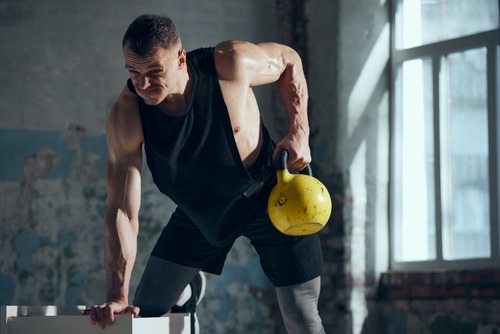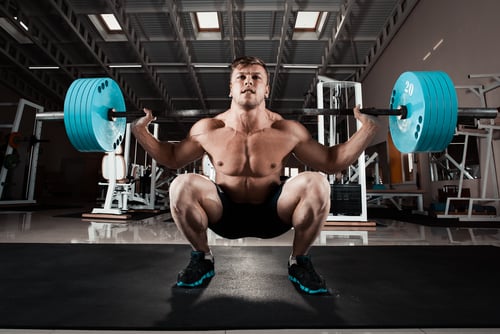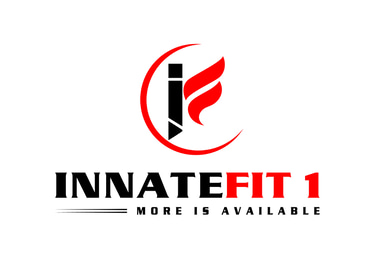Visit Innatefit1.com for exercise wear and equipment!!!
Flow Forge: Your Weekly Rhythm for Push, Pull, and Lower Splits in a Beginner Micro-cycle
Discover an optimized Weekly Flow microcycle for beginners with push, pull, and lower splits. Uncover how to structure your weekly workout plan for balanced strength gains, recovery, and progress in this comprehensive guide to push-pull legs workout and strength training microcycle.
WORKOUTSCONFIDENCE BUILDINGPERSONAL DEVELOPMENTBEGINNERS FITNESS TIPSSTRENGTH TRAININGHEALTHPOWERLIFTING TIPS
Joseph Battle
11/3/20254 min read


Embracing the Weekly Flow Blueprint
Firstly, let’s define the Weekly Flow concept. In this strength training microcycle, you structure four to six days around a push-pull legs workout. Consequently, you rotate push, pull, and lower body sessions in a repeating pattern, allowing each muscle group to recover while another works. Moreover, this approach serves as an optimized training splits model. It maximizes effort and rest, which are essential for beginners learning to schedule a Weekly workout plan that builds consistency.
Furthermore, you’ll craft a sustainable rhythm by alternating exercise types. This Weekly Flow keeps you motivated, prevents burnout, and reduces the risk of overtraining. In addition, you’ll experience balanced development from head to toe. By following an optimized training split structure, you ensure each session targets specific muscles with sufficient intensity. As a result, you’ll gradually progress in lifts and overall athleticism.
Day 1 – Igniting Power with the Push Session
On Day 1, focus on pressing movements that target the chest, shoulders, and triceps. Start with a compound exercise, such as a bench press or an overhead press. Then, progress to accessory lifts such as incline dumbbell press and triceps dips. This sequence prepares your central nervous system and muscles for maximum force production. Furthermore, by keeping rep ranges between 6–12, you balance strength and hypertrophy, which is perfect for a beginner strength-training microcycle.
Moreover, pay attention to technique. Actively drive through your feet, brace your core, and control the bar path. Transition smoothly between exercises, resting 60–90 seconds in between. In addition, incorporate a push-focused finisher, such as triceps pushdowns or overhead extensions. Consequently, you’ll ensure your muscles fatigue safely and effectively. By following an optimized push-pull legs workout plan, you’ll lay the groundwork for stronger presses in subsequent weeks.
Day 2 – Pulling Power: Rows, Pulls, and Posterior Gains
Next, Day 2 spotlights your back and biceps. Begin with a major compound pull such as bent-over rows or pull-ups. These movements activate your lats, rhomboids, and traps. Then move on to secondary lifts such as single-arm dumbbell rows, face pulls, or lat pulldowns. Moreover, finish with biceps curls to isolate the arm muscles. This progression cements balanced development across all pulling mechanics.
Equally important, maintain strict form. Retract your shoulder blades, hinge at the hips, and keep your spine neutral. Transition between horizontal and vertical pulling exercises for comprehensive stimulus. Additionally, rest 60–90 seconds per set to sustain quality and intensity. By incorporating this structure into your Weekly workout plan, you’ll steadily increase pulling strength while mitigating injury risk. Ultimately, this session complements the push day in an optimized training split sequence.
Day 3 – Lower Body Launch: Building a Solid Foundation
On Day 3, your focus shifts to the lower body. Start with a primary lift—squat, deadlift, or split squat. Engage your quads, hamstrings, glutes, and calves. Next, incorporate accessory exercises like Romanian deadlifts, leg presses, or lunges. These variations target muscle imbalances and promote joint stability. Furthermore, include core work such as planks or hanging leg raises to bolster your midline.
In addition, emphasize controlled movement patterns. Descend with intention, pause at the bottom, then drive upward through your heels. Rest periods of 90 seconds work well for these compound movements. By integrating this day into your push-pull legs workout cycle, you complete the trio of strength-focused sessions. Consequently, you achieve an effective strength-training microcycle that balances upper- and lower-body demands.
Day 4 – Strategic Rest and Active Recovery
After three consecutive training days, introduce a rest or active recovery day. While you step away from heavy lifting, you actively promote muscle repair by engaging in light activities like walking, yoga, or mobility drills. This deliberate rest is part of your Weekly Flow strategy and vital for long-term progress. It prevents overuse injuries and revitalizes your energy levels for the next block of sessions.
Moreover, use this time to address soft tissue work. Foam rolling, gentle stretching, and breathing exercises improve circulation and range of motion. In addition, assess your nutrition and hydration habits. A balanced diet rich in protein, complex carbs, and healthy fats fuels muscle repair. Consequently, you’ll honor the principles of an optimized training splits plan by ensuring hard training days and rest days complement each other…
Day 5 – Repeating the Cycle with Progressive Overload
With fresh energy, return to Day 1’s push session on Day 5. However, apply what you learned from your initial cycle. Increase the load by 2–5%, add a set, or boost rep targets by one or two. This progressive overload keeps your muscles adapting. Meanwhile, continue alternating push, pull, and lower days, ensuring you follow the same structure while slightly upping the challenge.
Furthermore, track your performance in a training journal. Note weights, sets, reps, and your perceived exertion. This record lets you objectively measure growth and refine your approach. Accordingly, each week you’ll fine-tune set and rep schemes, rest intervals, and exercise variations. Over time, your Weekly workout plan transforms from a basic routine into a dynamic, personalized program rooted in an optimized training splits philosophy.
Putting It All Together – Crafting Your Personalized Weekly Workout Plan
Finally, it’s time to assemble your schedule. A standard template looks like:
Day 1 – Push Session
Day 2 – Pull Session
Day 3 – Lower Body Session
Day 4 – Rest/Active Recovery
Day 5 – Push Session (Progressive Overload)
Day 6 – Pull Session (Progressive Overload)
Day 7 – Rest
Alternatively, if you prefer three workouts per week, you can cycle push, pull, and legs on non-consecutive days. Either way, maintain at least one rest day between hard sessions. By doing so, you optimize recovery and performance.
In conclusion, this push-pull legs workout microcycle serves as your Weekly Flow starter kit. Through alternating workouts, strategic rest, and progressive overload, you’ll build a solid foundation in strength training microcycle design. Therefore, embrace this blueprint, stay consistent, and watch your strength soar.


